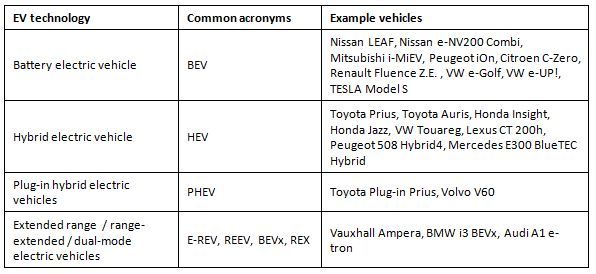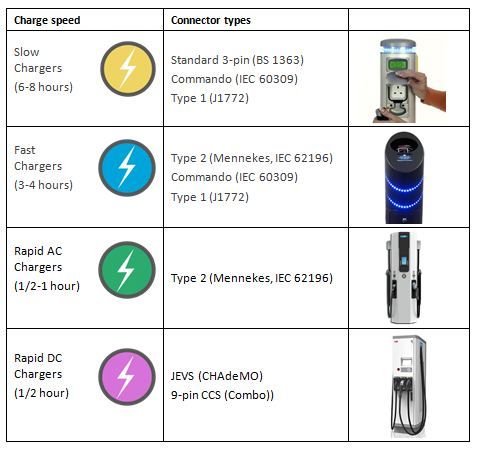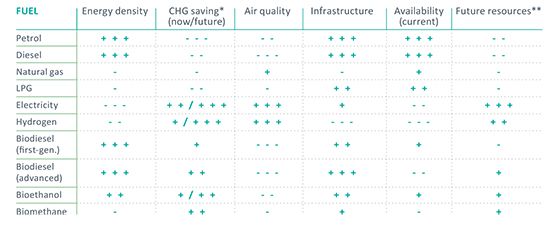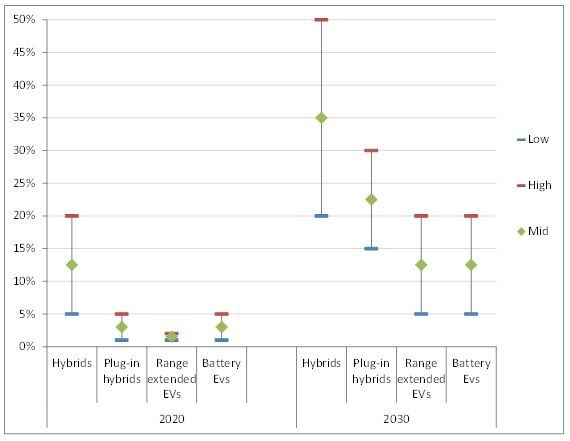In the September 19 issue of Local Transport Today magazine (LTT656) it stated that “electric dreams are now a reality”. It’s certainly true that there are many positive signs but, given that the number of electric vehicles (EVs) sold in the UK in 2013 represented just 0.3% of all vehicles, we perhaps need to be a bit cautious about such dramatic statements. Rather, it would be more realistic to say that we are currently at the tipping point for the adoption of EVs, but still with their widespread adoption at some risk.
Electric Vehicles Summit
The LTT article referred to above was on the back of the EV Summit held at Surrey University by Surrey County Council. At the event Baroness Kramer, the key note speaker, stated that “we are on the cusp of a technological revolution”. She pointed to a rapid increase in sales and government support in the form of a £500m investment programme, including further support for the plug-in grant, and a plan to install rapid chargers across the trunk road network.
We should recognise that the reasons the Government support EV technologies are two-fold; benefiting both the environment and the economy. This gives some comfort that even with a change in Government, support for the industry is likely to continue.
The Summit was an event which forms part of Surrey County Council’s EV strategy, which Steer Davies Gleave developed. Within the strategy we highlight how for EVs to become mainstream we require a co-ordinated public/private industry effort. Simply leaving it to the market would be unlikely to work (or would at least delay widespread adoption) because of the need for consistent, clear messages and easy to use (and interoperable) supporting infrastructure. In this respect we are not quite there; with differing charging technologies and networks and a confusing array of types of electric vehicles available (see Figure 1).
Nevertheless there is progress. The industry is now working together to create an inter-operable network of charging stations throughout the UK. The EV Summit was a further example of the industry coming together and looking at presenting a more coherent message to consumers.
Figure 1: Electric vehicle alternative technologies
On 15 October 2014 there were 7185 UK charging points of which 649 were rapid chargers. Up to date statistics and locations are available here: https://www.zap-map.com/live/
Why the future is electric
A question which consumers are concerned about is whether EVs are just a passing fad - a technology which will be soon outdated. The spectre of Betamax remains in the publics’ consciousness. However, the situation is becoming much clearer and we can now be reasonably confident that EVs are here to stay, at least for the next 40 years or so (Hydrogen Fuel Cells are likely to be the next technology, but this is only likely to be at the stage EV technology is now by around 2025).
This is because while electric power has some drawbacks, as a technology it wins out in the long-term. The summary of advantages and drawbacks of the available options shown in Figure 2 demonstrates this. It is true that the full benefit of electric vehicles will only be realised when electricity generation is substantially decarbonised, but even in advance of this, it has clear benefits in reducing greenhouse gas emissions, and immediate benefits in terms of air quality.
The key drawback of battery-based technology is the low energy density, which translates into batteries being big, slow to re-charge, and providing less range. This is a key reason why there are so many variants of the technology (see Figure 1). These variants reflect different manufacturers’ approaches to trying to solve these problems. In practice, the issue of range is primarily a fear of the unfamiliar and something which can be overcome. Given its inherent advantages, continuing technological development and the need to become less reliant on carbon-based alternatives - electric vehicles become an increasingly attractive option.
Figure 2: Advantages and drawbacks of alternative vehicle technologies
How quickly electric vehicles are adopted
With the eventual widespread adoption of electric vehicles almost certain, the speed of adoption is not. This is because it is dependent on the speed of technological developments and (even more unpredictably) policy choices by governments. The effect of these dependencies is illustrated in Figure 3 which illustrates the range of ‘take-up’ forecasts of individual EV technologies. For example, hybrid electric vehicles are forecast to represent between 20% and 50% of new car sales in 2030, whilst for battery electric vehicles the range is 5% to 20% by 2030.
To reflect this uncertainty, the World Energy Council has developed two scenarios: a “Freeway” scenario in which market forces prevail (20% of new cars are EVs by 2030); and a “Tollway” scenario where governments intervene to promote the technology (50% of new cars are EVs by 2030). Similarly, the International Energy Agency has developed a “Blue Map” scenario which sets out what could happen if various stakeholders work together. In this scenario, over half of new light vehicle sales globally are EVs by 2050. To achieve this vision requires on-going technological developments, improved consumer understanding and government support to coordinate and help kick-start take up.
Figure 3: Forecast adoption rates for electric vehicle technologies
Final comment
It seems almost certain that electricity will become the dominant source of power for cars and light vehicles globally at some point in the future. The question is really one of how quickly this will happen and whether the UK manages to be a leader or late adopter of the technology. This comes on the back of a growing appreciation that, while by no means perfect, electric batteries are the best available technology for the foreseeable future.
Sources:
Technology Roadmap: Electric and plug-in hybrid electric vehicles, IEA, 2011
Global EV Outlook, IEA, 2013
Global Transport Scenarios 2050, World Energy Council, 2011
Powering Ahead: The future of low-carbon cars and fuels, UK PIA and RAC Foundation, 2013




